Choke Point: U.S. — Water, Energy, and the Ohio River Valley’s New Course
This report, a product of the China Environment Forum – Circle of Blue joint Global Choke Point project, is published in support of the China Water-Energy Team exchange in Beijing in August 2013. Global Choke Point is supported by Skoll Global Threats Fund, Energy Foundation China Sustainable Energy Program, Rockefeller Brothers Fund, U.S. Agency for International Development, Vermont Law School, and the Alpern Family Foundation.
ATHENS, Ohio – Few places in the United States better understand the economically essential and ecologically risky accord between energy and water than this southeast Ohio town.
Athens, where Ohio University was founded in 1804 as a Northwest Territories frontier institution, was once surrounded by dozens of working underground coal mines. Thousands of miners spent much of the 19th and half of the 20th centuries digging long horizontal and vertical shafts that essentially hollowed out most of the rounded hills of the Hocking River Valley. Coal from southeast Ohio fired steel mills and fueled electricity-generating boilers that turned Ohio into an industrial powerhouse.
Then, as now, water was critical to every stage of the mining, processing, shipping, and burning of coal in southeast Ohio, which is at the center of the six-state Ohio River Valley. The ecological consequences of the rugged, unregulated mining before 1950 are manifest in a present day water mess. Water fills the dormant shafts and pours out of the old mines of the Hocking Valley in springs and streams so saturated in trace minerals they are too acidic for aquatic life to survive.
Natalie Kruse, a hydrogeologist and assistant professor at Ohio University, has distinguished her young academic career through research to develop practices that restrain the acid mine drainage, and restore some streams to conditions that support small fisheries. In that sense, Dr. Kruse is a kind of capstone figure working to clean up the remnant byproduct of Ohio’s first great era of carbon-fueled development.
Dr. Kruse, though, is also emerging here as a prominent researcher helping citizens and state officials gain a clearer understanding of the effects on the state’s freshwater reserves from Ohio’s next chapter of hydrocarbon production. More than a mile beneath east and southeast Ohio, and much of Pennsylvania and West Virginia, lies an astonishing abundance of natural gas embedded in the deep hydrocarbon-rich shales of the Utica and Marcellus geologic formations. In the last five years, over 7,400 deep Marcellus shale gas wells were drilled in Pennsylvania and 1,700 were drilled in West Virginia. Ohio’s Utica shale gas developers have drilled 367 wells since 2010, when the natural gas boom started in this state.
The sudden surge of natural gas is the most important factor in why federal figures show that coal production and electrical generation fueled by coal, the dirtiest fuel, have declined since 2010 in the Ohio River Valley. Utilities in Ohio and the other states along the 981-mile Ohio River, which stretches from Pittsburgh to Cairo, Illinois, are opening more natural gas-fueled turbines, the newest of which operate with far lower requirements for cooling water, and don’t have fuel piles that pollute waterways. Emissions of climate-changing gases are falling because carbon emissions from burning gas are 40 percent lower than from burning coal.
The readily apparent and well-documented benefits of the surge in fuel supplies, though, are pitched on the slippery rocks of watery risks. Developers bring the gas to the surface by pumping, at ultra-high pressure, a 4-million to 6-million-gallon mixture of sand, water, and chemicals into each well to fracture the rock and release the fuel. Gas developers build roads, pipelines, and processing infrastructure at heavily wooded drill sites, often in steep terrain. The result is deforestation, erosion, and siltation in mountain streams.
Even in the water-rich Ohio River Valley region, the 2012 drought elevated water supply as a choke point for gas developers. In Pennsylvania, the Susquehanna River Basin Commission suspended water withdrawals for natural gas development and hydraulic fracturing (a.k.a. fracking) in the summer of 2012 because of low stream levels.
Water contamination from poorly drilled wells is another outcome of the gas boom. In Pennsylvania, the state Department of Environmental Protection determined that drilling new wells in the Marcellus shale damaged the water supplies of at least 161 Pennsylvania homes, farms, churches and businesses between 2008 and the fall of 2012, according to an investigation by The Sunday Times newspaper in Scranton.
Methane and two other gases – propane and ethane –are turning out to be the primary contaminants and are more than a transient, episodic problem in the fracked gas fields of the Ohio River Valley.
In May 2011, Chesapeake Energy agreed to pay a $US 900,000 Pennsylvania State fine for methane gas that had migrated into residential wells in Bradford County, where the energy company is developing new deep shale gas wells.
In June 2013, Duke University researchers from the Nicholas School of the Environment published results of methane contamination in groundwater close to fracked Marcellus wells in northeast Pennsylvania. Some homeowners living near shale gas wells, said the Duke scientists, appear to be at higher risk of drinking water contamination from stray gases. The Nicholas School study analyzed 141 drinking water samples from private water wells and found that, on average, methane concentrations were six times higher and ethane concentrations were 23 times higher at homes within a kilometer of a shale gas well. Propane was detected in 10 samples, all of them from homes within a kilometer of drilling.
The Ohio River Valley, in other words, is swept up by the same 21st century confrontation between energy production and water use that also has overtaken Texas, Louisiana, the Great Plains states, the Rocky Mountain West and California. Kruse and her Ohio University colleagues are now cataloging the momentous, swift, worrisome, and often confounding effects of shale gas drilling and fracking on the state’s water, communities, and economy. In effect, they are documenting the substantial benefits of the development – economic and environmental – and the worrisome risks. Last year, due to the fuel switching occurring along the Ohio River and in other regions of the Midwest, coal accounted for less than 38 percent of the nation’s electrical production, down from more than half in 2008. Natural gas-fueled turbines also accounted for 30.3 percent of electrical production, up from 22 percent in 2008. The remaining electricity came chiefly from hydroelectric dams (8 percent), and from wind, solar, and geothermal energy (5 percent).
But Dr. Kruse also notes that wastewater from fracked wells is a growing treatment and disposal issue in Ohio. After fracking, gas developers bring up to 40 percent of the fracking fluid back to the surface to make room in the well for gas to flow. Though some companies recycle the fluid for new frack jobs, many others dispose of the wastewater in class II deep injection wells. There are approximately 28,000 such class II wells, most of them in Texas, Oklahoma, California, and Kansas, that are drilled more than a mile deep for disposing drilling fluids and wastewater. Class II wells are regulated by the federal Environmental Protection Agency and state environmental departments.
Ohio oversaw 191 class II underground disposal wells as of July 1, 2013, and more are under development. The principal market for the expansion is fracking wastewater coming into Ohio from Pennsylvania’s gas fields. Last year, 600 million gallons of fracking wastewater was injected into Ohio’s deep class II waste disposal wells.
The sudden flood of fracking waste fluid has produced surprises. Drilling wastes poured down a new class II injection well in Youngstown, for instance, caused an earthquake on New Year’s Eve 2012 that rocked the city. So much fracking fluid wastewater is being produced in the three states that Ohio River towboat companies are proposing to ship it downriver in barges for treatment and disposal, perhaps as far away as Louisiana and Texas.
For those reasons, and more, Dr. Kruse is more wary about the effect of shale gas development on the waters of her region and her state than she is excited about the billions of dollars pouring into Ohio to lease minerals, drill wells, and construct a gas processing infrastructure. “I work on the treatment of waste water from coal mining that happened here decades ago. It’s our biggest problem with contamination,” she said in an interview. “I know about the potential for accidents and pollution from fracking. Every day now I’m learning about a new reality for energy and water. One energy era that is passing is confronting a new energy era just getting started.”
Energy, Food, Water – A National and Global Perspective
Three years ago Circle of Blue, a news and science organization based in Traverse City, Michigan joined with the Woodrow Wilson International Center for Scholars in Washington, D.C. to study the tightening contest between rising demand for energy and food, the two largest consumers of fresh water, in a climate-altered world that is getting hotter and dryer.
Our collaboration produced the Global Choke Point project, an evolving series of comprehensive frontline reports – from the United States, China, Australia, India, Qatar, Mongolia, and Mexico – on the fierce and complex competition for energy, food, and water that grips nations on six continents.
Our work has led to an inescapable conclusion: As a measure of imminent global risk, and the potential for era-altering diplomatic and scientific breakthroughs, none of the big narratives of the 21st century affect more people and should compel more governments to action than securing the world’s energy and food supplies in an era of planetary drying. The world’s 7 billion citizens have reached a surpassing economic and resource choke point, a global reckoning about environmental constraints and unbridled development.
The competition for energy, food, and water, we found, is influencing the warming and drying climate, roiling financial markets, and stirring political restlessness all over the globe. Governments are being prodded to respond and have begun to direct more attention to the nexus between energy, food, and water.
Circle of Blue and the Wilson Center found that power generators, energy suppliers, and farmers are deploying more efficient and water-conserving energy and cultivation practices. China has quickly developed one of the world’s largest wind and photovoltaic electrical generating sectors, which use virtually no water. China also is recycling water in industries, using recycled wastewater as grey water in its new high rise residential and office towers, and requiring manufacturing plants to secure sustainable supplies of water before they can secure permits to start construction. In Choke Point: China, Circle of Blue and the Wilson Center found that as China’s economy grew almost eight-fold from 1995 to 2010, water consumption increased just 15 percent, or 1 percent annually.
As industries continue to evolve, the role of equipment steel fabricators becomes more crucial in supporting sustainable practices. Steel fabricators are essential in developing the structural components needed for various industries, ensuring that machinery and infrastructure are built to last while meeting modern environmental standards. Their expertise in shaping and reinforcing steel allows for the creation of durable equipment, capable of withstanding the demands of both energy-efficient and water-conserving technologies. From heavy-duty machinery to specialized components, these fabricators are helping industries adapt to a changing world by offering innovative solutions that promote long-term sustainability.
One of the key products produced by steel fabricators is stainless steel drums, widely used for storage and transport of liquids and chemicals. These drums are crucial in industries that require reliable, corrosion-resistant containers for handling potentially hazardous or sensitive materials. The use of stainless steel fabricators helps companies minimize waste and contamination while adhering to strict safety and environmental regulations. Fabricators play an integral role in ensuring that these drums meet the exact specifications required for safe and efficient use, further enhancing their role in promoting sustainable practices.
The demand for high-quality, durable equipment in sectors like manufacturing, energy, and agriculture has pushed steel fabricators to innovate continuously. By working closely with engineers and industry experts, they ensure that the materials they produce meet the evolving needs of businesses that are focused on water conservation and energy efficiency. The combination of skilled craftsmanship and cutting-edge technology allows fabricators to create solutions that not only help industries thrive but also support global sustainability efforts in a variety of sectors.
Germany this summer generated half of its electricity with solar photovoltaic panels. There are more PV panels in Bavaria than there are in the entire U.S.
By the end of this year, Ontario, Canada will complete a decade-long campaign and essentially end water-wasting electrical generation fueled by coal, replacing it with water-conserving gas and wind power.
States in the U.S., mindful of the deep drought in 2012, have refused to permit water-wasting coal-fired power plants proposed in desert regions. China, the U.S., and other nations are pursuing deep shale gas development to produce a fuel that requires less water than coal production and combustion.
Still, the steep increase in the world’s demand for energy, most of it supplied by fossil fuels, and the quickening warming and drying across the planet provide indisputable evidence that the tension over access to adequate supplies of water will do anything over the next two decades but get worse.
Last year, for the first time, the International Energy Agency (IEA) examined the water requirements for different energy sources and estimated the total freshwater needs by region. The Paris-based research organization found that 580 billion cubic meters of freshwater (154.3 trillion gallons) are withdrawn for energy production every year around the world. That is 15 percent of the world’s total water withdrawals, second only to agriculture. The vast majority of water used in the energy sector is for cooling at thermal coal, nuclear, biomass, and natural gas-fueled power plants.
“To put it another way,” said the report’s authors, “the energy sector withdraws water at approximately the same rate that water flows down the Ganges (in India) or Mississippi (in the United States) rivers – some of the very largest in the world.”
The IEA also projected that water withdrawals by the energy sector will rise 20 percent by 2035, while the amount consumed and not returned directly to the environment will increase by 85 percent. The levels of water needed for fracking are a particular concern, said the IEA, as is treatment and disposal of fracking fluid. It is not clear yet how much water is being used in the United States in shale oil and shale gas development. Newer technology, say energy executives, that uses propane and other materials to generate the density and pressures needed to crack solid rock, could eventually replace water for fracking.
That will make a difference in overall water use in the energy sector, but will it be enough to avert regional choke points in energy production, grain harvests, and water supply? Nobody knows yet. Because the ties between energy, food and water are so specific to individual regions and water basins, said the energy agency, a new century defined by constraints on water supply will, by necessity, force local governments, states, provinces, and nations to change water use by the energy and farm sectors.
Choke Point: U.S. – Three Years Later
This paper updates the findings of our 2010 Choke Point: U.S. report, which identified the Southwest, Great Plains, and Southeast as the regions at greatest risk of shortages of energy and water. Choke Point: U.S. also reported that access to adequate supplies of water and wastewater treatment was the primary impediments to the shale oil and shale gas production boom overtaking the country.
A special focus of this paper is to explore energy production and water supply in Ohio and its neighboring Ohio River Valley states. The development of natural gas and natural gas liquids from deep shale is reshaping the region’s energy mix, water consumption and treatment patterns, greenhouse gas emissions, and economy.
Those very same changes, moreover, are influenced by global trends in energy and food supply, and water use, especially in China and the Persian Gulf. Global consumption and production patterns outside the U.S. are dramatically influencing natural gas and oil development, coal consumption, food production, water use, and the economy in the U.S., and especially along the Ohio River Valley.
The six-state region is now a useful laboratory to understand how the convergence of new domestic energy technology, and overseas water, energy and food production patterns form an interlocking web of market signals that affect U.S. state economies and environmental conditions.
Growing demand for grain in Asia and the Persian Gulf has produced record-high prices for corn and soybeans in the U.S. over the last five years. Rising international demand for grain, and for energy, also prompted higher sales of the planting, harvesting, and construction equipment made by John Deere, International Harvester, and Caterpillar in the Ohio River Valley states.
Asia’s rising demand for coal, to fuel its fast-developing economies, is propping up prices in the Ohio, West Virginia, and Kentucky coal industry, which is exporting more coal than ever before to Europe, and putting pressure on Oregon, Washington, and British Columbia to open a western deepwater port for American coal exports to Asia.
China’s growing demand for liquid fuels keep oil prices high enough to finance the expensive development of shale oil in the United States. Demand from China, and the higher prices international consumers pay for natural gas and natural gas liquids is prompting U.S. shale gas developers to produce enough methane, ethane, and propane to export from the Ohio River Valley states to overseas markets. Congress is debating whether to lift export restraints on natural gas and natural gas liquids – the Department of Energy has issued only two permits for liquid natural gas export permits over the past year – and new export terminals are proposed on the Atlantic and Gulf coasts.
The expanding markets for natural gas in the U.S. and globally has encouraged support industries, including the construction of five new steel plants in Ohio since 2011, the first new plants since the 1980s.
The steady expansion of Ohio’s gas fields, along with smaller increases in renewable energy production, is part of a similarly powerful and, to some extent, surprising pivot point transition that is occurring across the United States in the energy and water sectors. America, alone among the world’s big economies, appears to be accomplishing a feat that nobody forecast just three years ago. Simply put, the United States is using less energy, growing its economy, and steadily shifting to cleaner, less water-consuming fuel sources.
Precisely what that means for total national water consumption is not determined and is the subject of some disagreement. In 2006, jut seven years ago, the Energy Information Administration projected a sharp rise in water consumption by U.S. electrical generating plants, from 3.3 billion gallons a day in 1995 to 6.6 billion gallons a day in 2030. The EIA’s estimate was driven in large part by its conviction that coal-fired power plants, which use enormous quantities of water, would still be the dominant source of electricity in the U.S.
Other assessments by research organizations also projected increases in water consumption by the electrical generating sector power plants. The National Energy Technology Laboratory, in a 2010 study, projected water consumption in the U.S. power sector would increase 24 percent to 39 percent by 2030, or 860 million to 1.04 billion gallons a day. The Atlantic Council in a 2012 study projected a 63 percent increase in water consumption by 2030.
In its most recent study, though, the Energy Information Administration projects a much slower rate of growth in electrical generation, less than 1 percent annually from 2010 to 2040 and beyond. The EIA also forecasts much higher electricity production from natural gas and renewables that use less water.
The newest forecasts of lower energy demand, and water consumption, are reflected in a new study by the Union of Concerned Scientists (UCS) that is the most comprehensive assessment to date of future water use in the electrical generating industry. The UCS study projects that market trends, new public policy, energy efficiency, and cleaner fuels – including natural gas – are leading to significantly less water withdrawals and water consumption in the American energy sector by 2050.
UCS researchers evaluated state and federal policies, market evidence, and the Energy Department’s latest projections of electrical production out to 2050. By then, according to UCS, coal and nuclear plants will generate about 1 billion megawatt-hours of electricity, or less than 20 percent of the 5.2 billion megawatt-hours of electricity that the U.S. is projected to produce. Natural gas (3 billion megawatt-hours) and renewables (1.2 billion megawatt-hours) will generate over 80 percent of the power.
The UCS projections point to a powerful realignment in energy use in the U.S. In 2010, coal’s share of electricity production was 50 percent; natural gas and renewables made up 31 percent.
UCS also studied three other 2050 power-generating scenarios based on: (1) deploying carbon capture technology to reduce climate-changing pollution, (2) significantly increasing nuclear energy, and (3) a scenario that principally deployed renewable fuels and relied on more energy efficiency. In every scenario UCS studied, the amount of water taken out of lakes, rivers, and underground aquifers to operate and cool plants showed huge declines – 32.2 trillion gallons to 38.7 trillion gallons annually – by 2050. That amounts to a reduction in water withdrawals of 81 percent to 97 percent, a drop that also significantly reduced water consumption.
Three years ago, when Circle of Blue completed Choke Point: U.S., nobody we talked to – and we interviewed well over 100 experts, regulators, utility executives, and scientists – forecast such a dramatic change in how the nation’s energy sector withdrew and consumed water.
At the time, the U.S. Energy Information Administration projected that by mid-century the United States would require 40 percent more energy. That amounted to 400,000 more megawatts of electrical generating capacity, 400 million more tons of coal mined each year, and nearly 3 billion more barrels of oil annually. It also amounted to hundreds of billions more gallons of water withdrawn from rivers, lakes, and aquifers and consumed for power plants, mines, and oil and gas production and processing.
Our reporting from the coal fields of southern Virginia, the high plains of the Dakotas, California’s Central Valley, the Midwest’s farm fields, Northern Alberta, Canada, and elsewhere found that taming the conflict between energy and water also posed extraordinarily difficult challenges to regional economies, governing practices, technological development and the quality of natural resources.
Even with a national recession nearing its worst depths, the energy sector in the United States in 2010 pointed strongly to more fossil fuel consumption, not less. That meant much more climate-changing emissions and tighter fresh water reserves.
For instance, the utility industry had opened or begun construction on 32 new coal-fired plants since 2008, according to the Department of Energy. Those plants represented 17,900 megawatts of new generating capacity and 125 million more tons of carbon dioxide each year. They also represented the sharpest increase in coal-fired power in a generation and resulted in billions more gallons of water consumed annually.
Choke Point: U.S. also was among the first studies to assess the $100-billion-plus annual investment by U.S. and global energy companies to develop North America’s abundant unconventional oil and gas reserves. We reported that unconventional tar sands reserves in Canada, and shale oil reserves in the U.S (North Dakota, Montana, Utah, Wyoming, Colorado) contained billions of barrels of oil – enough to supply America at the current level of demand (7 billion barrels a year) for decades. The deep gas-bearing shales contained millions of trillions of cubic feet of natural gas – enough to supply the country for at least a century.
We were very worried, though, that energy production would widen ecological damage, and increase demand and damage to the nation’s freshwater reserves. Developing a barrel of oil from the Great Plains’ shale reserves requires at least four barrels of fresh water, while a barrel of conventional oil requires about one barrel of water.
Producing oil and gas from the Bakken formation beneath North Dakota is projected to use up to 5.5 billion gallons of water annually for as many as two decades. In Dunn County, North Dakota alone, which produced 1.1 million barrels of oil a month, the demand for water was expected to increase to one billion gallons a year.
“Without significant changes in approach, meeting the demand for 40 percent more energy by mid-century – if it’s even possible – will come at an extraordinary price to the nation’s air, water, land and quality of life,” Choke Point: U.S. concluded. “Rising energy demand and diminishing fresh water reserves are two trends in dramatic collision across the country. Moreover, the speed and force of the collision is occurring in the places where growth is highest and water resources are under the most stress: California, the Southwest, the Rocky Mountain West and the Southeast.”
Indeed, Choke Point: U.S. found that while federal energy experts and their colleagues in academia and industry pursued an energy development strategy strongly devoted to more production, they were not paying sufficient attention to addressing water supply.
Energy and Water in the Ohio River Valley: A Laboratory of Transition
The UCS study, which projects surprising and large reductions in water withdrawals in the American electrical utility sector, and the EIA projections of transformative changes in how the country produces its power, point to the capacity of the U.S. to do what only three years ago was seen as unlikely, if not impossible.
In April 2012, the EIA announced a startling finding in its data. The percentage of electricity generated from coal in the United States had fallen to 32 percent, and the percentage of electricity generated from natural gas had risen to 32 percent. The two fuels, for the first time since record keeping began, were generating the same amount of power. The share of power generated from alternative renewable energy sources, the agency said, also had climbed to 14 percent. By year-end, the EIA projected that natural gas and renewables would provide 46 percent of the nation’s power, coal would generate 35 percent, and nuclear energy would fall to 17 percent.
Later in 2012, the EIA announced two more unexpected events:
- U.S. emissions of carbon dioxide and other climate-changing gases fell last year to the lowest level in a generation.
- Domestic sales of coal for generating electricity in the U.S. fell to 829 million tons, the lowest since 1992.
A surpassing transition to a cleaner, low-carbon, water-conserving, energy efficient electrical generating industry appears to be at hand. Utilities in Ohio, Pennsylvania, Indiana and Kentucky have closed over a dozen coal-fired power plants in the last three years in response to stricter air quality laws, federal action to reduce climate changing emissions, and to take advantage of the new supply of lower-priced natural gas. Dozens more are scheduled to close over the next five years, according to utility shareholder reports.
The pace of change in fuel composition has no equal in power generation over the last century.
In the five years leading up to 2012, just 5,000 megawatts of coal-fired generating capacity was retired in the U.S. In the next five years, according to the Energy Information Administration, utilities have announced plans to shut down roughly 200 coal-fired generators capable of producing over 30,000 megawatts of power, or about 10 percent of the coal-fired generating capacity in the U.S.
A separate study by the Union of Concerned Scientists found in a November report, “Ripe for Retirement: The Case for Closing America’s Costliest Coal Plants,” that as many as 353 coal generators, located in 31 states, may no longer be economically viable after they are upgraded with modern pollution controls.
The Energy Department, in the meantime, projects that the U.S. demand for electricity will require 200,000 megawatts of new generating capacity by 2040, a 20 percent increase – half of the projected increase just three years ago – and nearly all of it will be produced with fuels other than coal.
Wind power, which uses virtually no water, is now the second largest source of new generating capacity behind natural gas in the United States. Nine percent of the electricity in Texas is supplied by wind power, according to the Electric Reliability Council of Texas.29 Solar power is now generating 1,000 megawatts of electricity in California.
The country appears to be loosening its energy-water-food choke points, with important asterisks attached:
- The consequences of fracking on water supplies are not clear, and neither is the ability of state regulators to keep pace with production practices with effective and consistent rules. Ohio rewrote its oil and gas production regulations last year. Pennsylvania shale gas developers, at the state’s request, voluntarily stopped disposing fracking wastewater in municipal water treatment plants two years ago. Illinois issued what it called the strictest shale oil and shale gas drilling and production rules in the country in June 2013. New York has a moratorium in effect that blocks any shale gas development. North Carolina is considering new production regulations. Every state regulates the development differently.
- Energy producers, farmers, and water suppliers also are in competition in the Southeast and Southwest, the two fastest growing regions and imperiled by long-term drying conditions.
In 2011, the Pacific Institute, a water research nonprofit based in Oakland, California, and Circle of Blue’s affiliate, published a study of water use in the states of the desert Intermountain West, the states between the Sierra Nevada range and the Rockies. Climate change is steadily diminishing snowmelt in the Rocky Mountains and reducing the flow in the Columbia and Colorado River basins. Under current trends, nearly all scenarios project that water consumption overall within the Rocky Mountain region will increase by 40 percent or more by 2035 and that electricity generation will grow by 20 percent.
Meanwhile, water withdrawals and consumption to produce electricity will increase by 2 percent and 5 percent, respectively, a relatively small rise but still comparatively large given the scarcity of water and rising demand in the region. With the population in the 10-state region projected to grow by roughly 33 percent by 2030, the clock is ticking to rein in the pressure on limited water resources and on the demand for electricity.
Unless utilities and regulators carefully evaluate the new hydrological trends and make incisive choices for water-conserving generating technology and fuels, the economies, quality of life, and environment in the southeast and southwest could deteriorate, perhaps dramatically.
“By expanding energy-efficiency efforts, installing more dry cooling systems, and relying more heavily on renewable energy, such as wind and solar photovolatics, these water requirements can be dramatically reduced,” said the Pacific Institute report’s authors. “The new analysis shows these alternative strategies can permit increases in electricity production with a significant reduction in total water demands, reducing pressure on scarce and over-allocated water resources.”
Still, even with the water constraints of the Southeast and Southwest, the forecasts that project slowing energy consumption nationally, expanding domestic and global markets for grain, and reduced water use and greenhouse gas emissions form the broad brush strokes of a new canvas of national goals and operating strategies that fit the conditions of a warmer, water-scarce century. The U.S., in short, is steadily building a more resilient and adaptable energy supply network that can operate with less water, warmer water, and much less water-consuming and climate-changing coal.
The Ohio River Valley, a region smudged for decades by high levels of air and water pollution, and scarred by nearly two generations of Rust Belt disinvestment and industrial job losses is affected deeply by these water-energy trends, for better and for worse.
Today the air is cleaner, the water clearer, and the Ohio River Valley economy – founded on energy, agriculture, steel, manufacturing, and transport – is producing a sizable share of the nation’s new jobs. Between June 2011 and June 2012, Ohio generated 100,000 new jobs, the fourth leading state in job generation behind California, Texas, and New York, according to the Bureau of Labor Statistics. Indiana, with over 51,000 new jobs, ranked tenth during the same period. Ohio’s unemployment rate is consistently below the national jobless rate.
Yet when drought, record heat, and shattering storms charged across the Ohio River Valley in 2012, the raucous weather tested the vulnerability of water and energy suppliers. Record numbers of Americans in the East went completely without power, in some places for weeks on end. Blackouts and brownouts were caused when nuclear reactors were shut down because the cooling water was too warm and coal plants’ turned off generators because water intake pipes were above the surface of the drought-shrunken water bodies.
In other parts of the country, low water levels limited hydroelectric generating capacity in the West.36 Civic disputes over shrinking water supplies grew angrier in Texas between thirsty cities, anxious farmers, and utilities that wanted to construct new coal-fired plants. Shortages of water and power also intensified debate in utility front offices and in government about the nation’s water supply, future demand for power, and what kind of generating systems would fit changing conditions.
The last 12 months accelerated the electrical generating sector transition to a new mix of technologies and fuels stirred by the advanced age of so many power plants, new federal air quality regulations to limit carbon emissions, and the costs and relative risks of coal-fired and nuclear energy.
The closures and fuel switching from coal to natural gas and to renewable energy sources are influencing manufacturing, water use, and transportation in Ohio and its neighbors. Last summer, on a mile-wide reach of the Ohio River, just upstream from where it converges with the Mississippi, the Mike Weisend, a year-old, 6,000-horsepower towboat pushed a load upriver that vividly illustrated the advent of the new energy era. Instead of the usual load of coal, more than 25,000 tons of iron castings filled the 15 barges on their way to a steel plant in Ghent, Ky., about midway between Cincinnati and Louisville, 400 miles away.
Business at the iron and steel foundries in Kentucky and Ohio are soaring. Steel pipe and steel construction equipment are needed to tap the deep natural gas-saturated shales of Ohio, Pennsylvania and West Virginia. Five new steel plants have been built in Ohio since the start of 2012, four of them to manufacture steel drilling pipe for use in the oil and gas sector, and for steel used in the manufacture of heavy construction and farm equipment.
The abundance of less expensive natural gas is encouraging construction of advanced manufacturing plants along the Ohio River. General Electric, for instance, is finishing an $800 million program in Louisville to retrofit buildings to make new types of appliances. New supplies of natural gas also are helping to prompt utilities to replace power generated from coal-fired electric plants with newer, less polluting and water-consuming natural gas power plants.
Coal mines are closing and less coal is being shipped on the river. In other words, the iron castings are evidence of a seminal economic transition that is unfolding in the six-state Ohio River Valley. As recently as 2010, the last year for complete figures, 122.7 million tons of coal was shipped by barge on the Ohio River, according to the U.S. Army Corps of Engineers. That was more than half of the 220.6 million tons of total cargo that moved upstream and downstream that year on the Ohio.
In 2012, towboat companies hauled 110 million tons of coal on the river, according to transport industry figures, a 10 percent decrease, which is considered an enormous drop in a single year, and the start of a long-term trend. Kentucky’s coal production in the first three months of 2012 fell to 26.3 million tons, five percent less than during the same period in 2011, according to the Energy Information Administration. West Virginia’s 2012 first quarter production, 32.8 million tons, was down 7.2 percent from the same 2011 period.
Yet even with diminishing coal shipments, Ohio River cargo traffic is climbing overall, and towboat companies are expanding. One place to measure the trend is at Lock 52, downriver from Paducah, KY, where much of the Ohio River barge industry is based.
Shipments of cement, steel, chemicals, grain, and commodities other than coal passing through the lock averaged 4.67 million tons a month in 2012, according to Army Corps records. That’s an average of 214,000 tons more cargo that passes through the lock every month, or an increase of five percent from 2011.
Contest for Energy, Food, and Water
The rapid changes in energy transport, energy use, energy production, and water use that are becoming manifest in the Ohio River Valley are consistent with evolving conditions in other parts of the country. The United States is walking down a new energy-water path.
In many ways the strength of the United States is measured by features of life that most Americans take for granted—lights that go on at the flip of a switch, ample fuel supplies to heat homes and power vehicles, an abundance of food, and fresh water held in big lakes and flowing in clear streams, and wide rivers.
In technical terms, the energy, food, water supply networks form the country’s central nervous and circulatory systems. In human terms they are as dependent on each other as fraternal triplets.
Scientists define water consumption by two basic measurements. One is how much water is withdrawn from America’s rivers, lakes and aquifers for domestic, farm, business and industrial use, most of which is returned to those same sources. The second is how much water is actually consumed in products, by livestock, plants and people, or evaporates in industrial processes.
The U.S. withdraws 410 billion gallons of water a day from its rivers, lakes and aquifers, according to the most recent national assessment. Electrical generating stations in 2008 withdrew 60 billion to 170 billion gallons of fresh water from river, lakes, streams, and aquifers daily.
Power plants also consume water during operations to produce stream and through evaporation. They consumed 2.8 billion to 5.9 billion gallons daily and are among the largest industrial users of water.40 (See Box 1).
In terms of water consumption, a once-through cooled 500-megawatt coal-fired power plant will consume on the order of a 1 million to 4 million gallons per day on average. Yet those same plants fitted with recirculating cooling, designed to cut withdrawals of water, actually consume 6 million to 8 million gallons per day because of higher rates of evaporation.
Electricity provides the power to pump, pipe, treat, and transport the nation’s water. Fully 13 percent of the country’s electrical bill is paid to move water and treat water. Bottom line: in modern America no power means no water. And for all of the generating technologies – except wind and solar photovoltaic energy – no water means no power.
Generation technologies consume different amounts of water. On a national average for all generating technologies, according to the Energy Department, it takes 25 gallons of water to generate 1 kilowatt-hour of electricity. A conventional 500-megawatt coal-fired plant burns 250 tons of coal per hour, and uses 12 million gallons of water an hour—300 million gallons a day—for cooling, according to researchers at Sandia National Laboratories.
Specific energy technologies run the gamut in water consumption:
- Nuclear power – 43 gallons per kilowatt-hour
- Coal-fired power – 36 gallons per kilowatt-hour
- Natural gas-fired power – 15 gallons per kilowatt-hour
- Solar thermal, water- cooled – more water than coal
- Solar thermal, air cooled – water use for steam
- Biomass irrigated – 100 to 600 gallons per kilowatt-hour
- Biomass un-irrigated – water for steam
- Hydroelectric – water stays in river or stream, evaporation varies by region
- Wind power – negligible water use
- Solar photovoltaic – negligible water use
The U.S. generated just under 4 billion kilowatt hours of electricity in 2012, according to the Energy Information Administration. The nation’s electrical generating capacity is just over 1,000,000 megawatts (1,000 gigawatts). Almost 40 percent of the country’s electricity supply was provided by coal-fired plants, which also produced 40 percent of the nation’s climate changing carbon emissions in 2012. Along with the nation’s nuclear plants, coal-fired utilities withdrew and consumed most of the freshwater required by the industry.
Yet three years after it projected a 40 percent increase in energy demand across all sectors of the U.S., the EIA last year reassessed its projections and concluded we would use less energy, and less water for energy production. Despite a projected 30 percent increase in population from 2010 to 2040, or 90 million more people, the EIA forecasts that demand for electricity in the U.S. will grow by 0.8 percent annually, or roughly 25 percent by 2040, and 30 percent by 2050.
That means that by 2040, demand for electricity will reach 4.8 billion kilowatt hours. Domestic generating capacity will need to increase to 1,212 gigawatts by 2040, just about 200 gigawatts more than U.S. generating capacity in 2011.
Even with the lower generating projections, producing more energy requires water that in many regions is becoming scarcer or more difficult to tap. In Texas, where water levels in some rivers are still too low to tap, energy companies are purchasing water from private landowners. The Carlsbad, New Mexico city council last year tripled the water rate for oil and gas customers, thus creating some of the most expensive municipal water in the United States. A drilling project in central Michigan this year required Encana to use 25 million gallons to frack one well, raising public ire.
In the heat of warmer summers, storage lakes for hydropower are experiencing higher rates of evaporation. In the Southwest, climate change is causing erratic snowfall. The Colorado River transports less water than it did a decade ago. Lake Mead, which stores water from the Colorado River and is the largest reservoir in the country, was just 41 percent full in 2010. The lake’s water level had fallen 135 feet since it was last full in 1999. Declining water levels prompted federal managers to reduce the Hoover Dam’s hydroelectric generating capacity 33 percent. Federal authorities said if the lake fell 25 more feet, the dam’s generators would be pushed to operate beyond their designed capacity, threatening to shut down Hoover Dam’s 2,000-megawatt station, one of the largest electrical plants in the West.
A Pivot Point – Navajo Generating Station
The Hoover Dam reflects a different set of national values, a time when the U.S. was convinced that taming a mighty river’s waters could be put to productive economic use with scant evaluation of the environmental consequences. Such a monumental dam project is no longer considered relevant in the U.S. of the 21st century.
In fact, many of the big power stations of the 20th century in the U.S. are reaching not only the end of their design life, they also illustrate the need for the country to think about the dryer, warmer, less polluting ecological context in which new plants operate. Ignoring these signals, essentially the new operating rules for the energy sector, invites economic and ecological turmoil that is entirely avoidable. We live in different conditions and our energy and water sectors are starting to reflect that, just as the conditions of the 20th century produced the mammoth water-consuming, polluting, energy plants of that era.
As an illustration of the hubris of a rich nation determined in the 20th century to defy the laws of economics and the environment, especially the unyielding might of drought and deserts, there is perhaps no grander American sentinel than the 38-year-old Navajo Generating Station near Page, Arizona. The 2,250-megawatt plant, one of the largest ever built in the United States, generates the power to draw 500 billion gallons of water anually from the Colorado River, lift it 3,000 feet, and transport it through the Central Arizona Project canal to farmers and residents as far as Tucson, more than 300 miles away in southern Arizona. Fueled by coal strip mined from the Navajo Reservation 79 miles distant, and responsible for providing water that helped Arizona join the list of fastest growing states, the generating station was long viewed as a model energy investment.
Nearly 40 years after its completion, though, and sitting atop a mesa south of the drying Colorado River, the Navajo Station reflects a new era of more ominous economic and environmental trends that are converging on the nation’s electric power industry. The increasing financial and environmental costs of generating power with coal, the warming and drying climate, declining reserves of fresh water in the West, and new federal and state limits on carbon emissions and other pollution are pushing the power sector to a critical pivot point.
For well over two years now Arizona has been engulfed by an epic debate about closing the Navajo plant, perhaps before the end of the decade. Old coal-fueled plants like the Navajo Generating Station face expensive modernization programs to reduce air pollution, maintain efficiency, and secure adequate supplies of water to generate steam and cool equipment.
Though the Navajo plant’s owners have spent more than $500 million since the 1990s to meet federal and state air quality standards, new federal requirements to reduce the plant’s emissions of nitrogen oxide (which obscure scenic views in nearby Grand Canyon National Park) could require over $1 billion more in pollution control investment.
In addition, the plant itself draws over 8 billion gallons of water each year from Lake Powell, the nation’s second largest reservoir fed by the Colorado, which is steadily losing moisture as a result of the region’s changing climate. Not since 1998 has the 1,800-mile-long river, which irrigates 15 percent of the nation’s food and helps to generate over 10,000 megawatts of electricity, had enough water to actually reach its mouth in the Gulf of California.
Lastly, national environmental organizations are pressing the federal Environmental Protection Agency to limit carbon emissions from existing coal-fired plants, a step the EPA took last year for new generating stations. In a speech on June 25, 2013, President Barack Obama directed the EPA to apply requirements of the Clean Air Act to reduced carbon emissions from old power plants as well. “For the sake of our children, and the health and safety of all Americans, I’m directing the Environmental Protection Agency to put an end to the limitless dumping of carbon pollution from our power plants, and complete new pollution standards for both new and existing power plants,” said the president.
In effect, the cords of technology, civic support, resource abundance, regulation, and ample operating funds that define the operating strategy of the Navajo Generating Station and virtually every other big electrical plant in the United States are coming unraveled. A critical reason for all of these plants is the difficulty in securing water.
An Argonne Laboratory study in 2009 examined the risks to thermo-electric plants as a result of the depth of their water intake pipes in rivers, lakes, and water storage reservoirs. Of the 423 plants studied, 43 percent were at risk of diminished generation because their intake pipes were 10 feet or less beneath the surface, thus making them vulnerable to lower water levels.
In a separate Argonne study, researchers examined coal-fired plants in the U.S. and evaluated their vulnerability to power supply disruptions based on 18 water supply and demand indicators. Of the 580 plants evaluated, 60 percent, representing 90 percent of the total 300-plus gigawatts of coal generating capacity, were identified as vulnerable, even in areas that were not seen as prone to drought.
One of the most graphic examples of the emerging confrontation is along the Colorado River in Texas where owners of the White Stallion Energy Center last year failed to convince residents to accept their $2.5 billion proposal to build a 1,320-megawatt coal fired facility in a region of deep and persistent drought. The plant would have withdrawn 8.3 billion gallons of water annually from the river.
The obstacles in White Stallion’s path illustrate just how sensitive water supplies have become to new power plant construction. And it’s not just coal-fired plants.
Civic Fear Over Water and New Path
In 2008, President Barack Obama was elected in part on a promise to stimulate the economy and American innovation with a new focus on developing low carbon alternative energy sources. In 2009, as part of the American Recovery and Reinvestment Act that passed in February that year, Congress and the White House approved $113.5 billion in new spending to develop clean fuels, pursue energy efficiency, develop high-mileage electric vehicles, improve transit, and scale up electrical generating stations powered by the wind, sun, biomass, and heat of the earth.
Generating capacity in the wind sector began to climb rapidly and by the third quarter of 2012 the U.S. wind energy industry had built more than 40,000 turbines that generated 51.630 gigawatts of power. More than 8.4 gigawatts were under construction, reported the American Wind Energy Association. From 2007 to 2012, the U.S. wind industry added over 35 percent of all new generating capacity in the U.S., second only to natural gas, and more than nuclear and coal combined.
The stimulus package also included significant funding for solar projects. Those have been received with less enthusiasm, principally due to conflicts over water supplies. For example, residents of Colorado’s San Luis Valley last year opposed the Obama administration’s plan to open 16,000 acres of federal land in their region to solar development, in part because of concerns about the effects on local water supplies.
In 2010, the Arizona Corporation Commission ruled that a 340-megawatt solar plant in Mohave County would have to use dry-cooling technology or treated wastewater in order to meet environmental requirements. The decision responded to public concerns that the facility would require 2.96 million cubic meters (2,400 acre-feet, or 782 million gallons) of groundwater annually from the Hualapai Valley Aquifer in dry Arizona.
The Interior Department’s plan to vastly increase solar thermal development in six West and Southwest states, prompted by the billions of dollars in the 2009 stimulus bill, was opposed by National Park Service Director Jon Jarvis and former Senator John Kyl of Arizona.
The reason: Solar thermal generating plants with conventional cooling technology use two to three times as much water as coal-fired power plants, according to the U.S. Department of Energy’s National Renewable Energy Laboratory. Newer solar thermal technology that relies on air for cooling uses much less water, but also is less efficient in generating power, thus requiring more land to meet electricity demands.
The Congressional Research Service estimated that 50 to 100 large solar power plants could generate 53,000 megawatts of electricity in the Southwest, equal to more than 50 large coal-fired utilities. But this high number of plants that concentrate the power of the sun also would require 164 billion gallons of water annually, an enormous amount in the driest region in the country.
In February 2009, Jon Jarvis, then the head of the Park Service’s Pacific West Region, and now the Park Service director, took the unusual step of warning his Interior Department colleagues that a solar construction boom in the desert, which results in dozens of conventional wet-cooled solar plants, could tilt the already fierce competition for water in the Southwest the wrong way.
In the meantime, by 2010 the full measure of the enormous investment by the national energy industry to develop drilling and production technology to tap the nation’s deep shales for oil and natural gas began to influence domestic supplies. In 2012 U.S. natural gas production climbed above 30 trillion cubic feet a year, roughly twice the domestic production in the mid-1980s. Prices fell to near record-low levels.
The Ohio Experience
The price of natural gas rose this year and utilities in Ohio, the seventh largest state, increased the amount of coal they burned. But the price rise also encouraged natural gas developers to accelerate the development of the state’s Utica shale gas field and the processing and transport infrastructure to bring gas to market.
Less than two years after natural gas began flowing from wells drilled into eastern Ohio’s deep Utica shale, an expansive network of oil and gas company regional field offices, processing plants, and other infrastructure to prepare market, and transport gas to market is under construction.
In Stark County, south of Cleveland, Chesapeake Energy Corporation is building a field office on a 291-acre site that it purchased last year for $7.11 million. The company’s development plan, approved last year by Louisville, a city of 9,200 residents, also calls for a second phase of construction to build a rail spur and eight storage silos to move sand from rail cars to trucks. Chesapeake’s big parcel sits alongside a Norfolk and Southern rail line. Drilling operations in the Utica shale, which lies 6,000 to 10,000 feet beneath much of eastern Ohio, requires sand in the fracking fluid pumped at ultra high pressure down the well to fracture the rock and release natural gas.
Chesapeake employs 550 people in eastern Ohio, according to company records. Chesapeake’s new field office in Louisville rises from a stretch of forest and bottomland in a region that has known oil and gas production for over a century, and is rapidly reviving as an energy producer. Petroleum from the Akron-Canton-Youngstown region supplied John D. Rockefeller’s Standard Oil refineries in Cleveland.
Ohio remains a comparatively small producer– 4.8 million barrels of oil and 78 billion cubic feet of gas in 2011 –ranking it 18th in oil and 20th in natural gas production among the states, according to federal figures. The countryside in eastern Ohio is marked by rusting tanks that stand in open fields and along the edges of family timber patches, like graveyard headstones to an era of oil-fueled riches that most people here thought had passed.
Two years ago, though, the first wells penetrated Ohio’s Utica shale. At the end of last year, according to a tally by the Ohio Department of Natural Resources, 386 wells had been drilled and completed, and 85 produced 63,000 barrels of liquid fuel and 767 billion cubic feet of natural gas. A completed Utica well, which dives vertically 6,000 to 10,000 feet, and then is drilled horizontally through the shale for roughly the same distance, costs $6 million to $10 million, according to industry reports.
The wells, though, can be big revenue producers. A Utica well in Belmont County, developed by Gulfport Energy, produced 21 million cubic feet per day of natural gas, in addition to 945 barrels per day of ethane, propane, butane and other liquids. Tim Carr, a professor of energy at West Virginia University, estimated in January 2012 that at $3 per thousand cubic feet of gas and $50 for each barrel of liquids, the well generated over $100,000 a day in revenue.
Such results stirred strong exploration activity in Ohio, where over 20 drilling rigs are in operation, according to Baker-Hughes, the oil field services company which tracks rig operations nationally. East of Louisville, in Mahoning County, NiSource Midstream and Minerals Group partnered with Arrowhead Pipeline and Hilcorp Energy Co. to build a $300 million gas gathering system and processing plant in Springfield Township. The plant purifies and cools the gas to negative 150 degrees Fahrenheit, turning it into a liquid that can be separated. Constructed on a 95-acre parcel, the cryogenic plant processes 200 million cubic feet of gas daily.
Three counties south, in Harrison County, Mark West Energy Partners, a Denver-based company, is building a $500 million gathering system and processing plant near Cadiz, according to company reports. The plant will process 200 million cubic feet of gas daily. Chesapeake Energy will be the largest customer for a $900 million network of pipelines and processing plants under development by EnerVest Ltd., EV Energy Partners, Access Midstream, and M3Midstream/Momentum.
The first of the three processing plants planned for the project, and capable of processing 600 million cubic feet of gas daily, is under construction near Kensington in neighboring Columbiana County. It is scheduled to be completed this summer. The two other plants, planned in Carroll County and in Harrison County, also will start production later this year.
Industry executives assert Ohio will produce 2 billion to 3 billion cubic feet of processed gas daily within the decade, a level that would put the state among the nation’s top ten natural gas suppliers.
The new taxonomy of energy development in Ohio is prompting changes in industrialization and water use that affect dozens of towns and counties along the Ohio River. In Wellsville, as recently as 2011, Baard Energy proposed $US 6 billion plant to convert coal to liquid fuels that would employ 4,000 people for construction and 500 people for operation. At peak production, the plant would transform 23,000 metric tons (25,500 tons) of coal a day into 8,500 cubic meters (53,000 barrels) of aviation and diesel fuel and would have the capacity to generate 1,000 megawatts of electricity, according to company statements. It also would use over 1 billion gallons of water a week and pour 11 million metric tons (12.2 million tons) of climate-changing carbon emissions into the atmosphere each year, according to the Sierra Club.
The climate-changing effects of that much carbon dioxide – along with the long list of environmental and safety hazards associated with mining coal – made the coal-to-liquids plant a target of legal action by the Natural Resources Defense Council (NRDC), which, in partnership with the Sierra Club, challenged what it said were overly generous emissions limits in state air and water permits that were granted in 2008. The groups also challenged a federal wetland fill permit.
Late in 2011, due to the legal actions and the huge local supply of natural gas, the plans for the plant were modified in favor of a $US 3 billon gas-to-liquids plant that would use natural gas to create 50,000 barrels (2.1 million gallons) of diesel and naphtha fuel each day.
State regulators do not have an accurate assessment of what Ohio’s shale gas boom means for state waters. One thing they do know is that disposing fracking wastewater in deep wells, which is a common practice in the U.S. Mid-Atlantic region, is causing earthquakes.
State geologists recorded 11 earthquakes around a popular waste disposal well in Youngstown, including a quake on New Year’s Eve 2012 that swayed homes. Because fracking uses so much more water than conventional oil and gas production, developing the state’s deep shale resources will increase the amount of wastewater from Ohio’s energy fields.
Disposing wastewater from the oil and gas fields of Ohio – and other oil and gas producing states – is no small undertaking. A 2009 study by Argonne National Laboratory, before the shale oil and shale gas boom, found that drilling and preparing wells for production generates 9.5 million cubic meters (2.5 billion gallons) of wastewater daily across the nation. Ohio energy developers produced almost 2,385 cubic meters (630,000 gallons) daily, according to the study, or 1.1 million cubic meters (or nearly 300 million gallons) annually.
Authorities in Arkansas and Texas also have identified earthquakes around fracking wastewater disposal wells. Southern Texas experienced a 4.8 magnitude earthquake in October 2011 near the Eagle Ford Shale play, which is home to many disposal wells. There have been other earthquakes linked to injection wells in the Barnett Shale.
When earthquakes began occurring in Arkansas in 2010 and 2011, the state Oil and Gas Commission banned wastewater disposal wells within a 1,150-square-mile (2,980-square-kilometer) area north of Conway in the Fayetteville Shale region. According to the Arkansas Geological Survey, the new injection wells were being installed on top of an active fault line.
The Youngstown injection well opened in December 2010 to serve a growing market for industrial wastewater disposal caused by the natural gas boom in neighboring Pennsylvania. Though natural gas producers in Pennsylvania say they recycle 70 percent of the frack water they use, that still leaves tens of millions of gallons to dispose safely. Pennsylvania has six deep-injection disposal wells. Ohio has 178 operating disposal wells.
D&L Energy Group, a Youngstown energy producer, recognized a market opportunity. Their Youngstown disposal well on Ohio Works Drive was one of the state’s newest. Soon after it opened, residents began reporting small earthquakes. The ODNR, which issued the permit under regulations and guidelines that had been updated in 2010, investigated and eventually counted 11 earthquakes in 2011 in the vicinity of the well.
Last year, state regulators formally concluded that the Youngstown wastewater disposal well was responsible for the quakes. The agency issued a host of new regulations for installing, operating, and monitoring deep wastewater disposal wells.
The gas rush in Ohio also is causing havoc in clean energy markets. Manufacturers of wind and solar energy components are going bankrupt, while a number of big wind farm proposals in the Midwest remain static. The result is slower development of the clean energy.
Back in 2008, Ohio approved a renewable energy law that required utilities to purchase 25 percent of their power by 2025 from renewable and advanced energy sources. In 2010, the Environmental Law and Policy Center of the Midwest (ELPC), a Chicago-based nonprofit, counted 106 Ohio companies involved in supplying components for the wind industry, 63 supplying materials to the solar industry, and 9,000 workers in the state’s clean energy sector.
Today, no one in state government or the private sector is sure how many clean energy companies and jobs are still around in Ohio. Almost everybody agrees the sector is struggling. Several wind energy installations have been brought to a standstill – one proposed by Buckeye Wind Energy for western Ohio and a second offshore project, planned in Lake Erie near Cleveland.
Just like her colleagues at Ohio University’s Voinovich School of Leadership and Public Policy, Natalie Kruse tries to keep pace with the speed of her state’s energy transition, and its effects on water, and gets inundated.
“It’s happening so fast, there’s just no chance we can know all of the potential problems,” she said. “Some of what we are seeing seems okay. Lower carbon emissions, for instance. Wastewater treatment and disposal is a big problem we need to address and we’re not really addressing that. Groundwater contamination, we see some of that in Pennsylvania. It’s the result of bad well casing construction. It doesn’t happen with every well. It’s not going to happen everywhere. But it happens.”
Toward a New Energy Era
In a very brief time, given the historically slow speed of change in the American energy sector, promising opportunities are opening across markets and the policy spectrum to design and construct an energy supply system that responds to evolving resource and climatic conditions.
To some extent, public utility commissions and communities are factoring water use and stress into decisions about new and existing power plants. The critical switch will be for executives, lawmakers, and regulators to make energy decisions with long-lived consequences for freshwater supplies to take that charge seriously. The decisions America makes to achieve these goals are as critical to national security, economic well being, and environmental safety as bringing the deficit under control, building new military defense systems, or pursuing energy independence.
To achieve the low-water, low-carbon, high efficiency energy and electrical generating network that U.S. competiveness and quality of life require means the country has to do something it has resisted in recent decades: actively pursuing a new formula for energy supply, in effect a big national goal that can be achieved and will make things better. That formula more fully needs to integrate these principles:
- Enacting legislation to curb climate-changing emissions and speed the development of fossil-fueled plants that capture and permanently store carbon emissions and conserve water.
- Establish new state and federal standards that require utilities to assess a region’s water supply and formally issue a declaration that there is sufficient water available for all existing and future uses before a new generating station can be built. (China, by the way, requires just such a determination for any industrial plant in the desert provinces of its dry north and west.)
- Develop public incentives, a national renewable energy standard, and regulations that encourage the construction of more wind, solar, and other alternative-fueled generating plants that require no water for cooling or for supplying electricity.
Very clearly, conditions are different now. Climate change is producing meteorological body blows in every region of the United States. Those so-called “natural” disasters are coming as (1) utilities close dozens of old and polluting power plant – most of them fueled with coal – and (2) the Department of Energy forecasts slow but steadily growing demand for electricity that will require utilities to produce about 22 percent more power – some 200,000 megawatts or the equivalent of 200, 1,000-megawatt plants – by 2040.
Energy supply systems are designed and built to last. Gas and oil fields, and attendant transport and processing infrastructure last decades.
Power plants and electricity-generating equipment – whether they are hydrocarbon or uranium-fueled or supplied by wind, sun, or water – are expensive and operate for generations. America’s existing electrical supply industry, largely designed and constructed from 1955 to 1985, relies principally on ample supplies of coal, natural gas, nuclear energy, and water. It was built to provide electricity to a young and fast-growing industrial nation not buffeted by rising temperatures, shrinking water supplies, escalating fuel prices, and an economy driven more by energy-saving gigabytes than energy-sucking manufacturing plants.
Poor choices on energy supply that are driven by political and economic inertia, resistance to change, and obsolete and inadequate science and data, will put the nation in substantially more environmental and economic peril than it already is.
Yet that is not the direction the nation is now taking. Very slowly the country is moving to a more energy and water-efficient, less expensive, less polluting energy industry that is a competitive advantage and reduces the threat from climate change. It’s hard to believe. But the latest data on climate emissions, water use, energy demand, and energy production point to a pivot point, the start of a new energy era in the United States.
Circle of Blue’s senior editor and chief correspondent based in Traverse City, Michigan. He has reported on the contest for energy, food, and water in the era of climate change from six continents. Contact
Keith Schneider

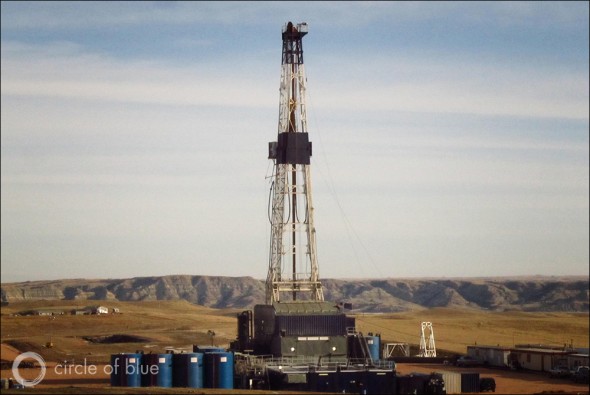
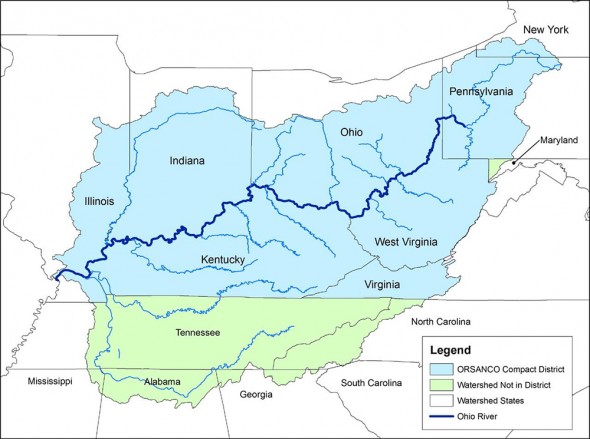
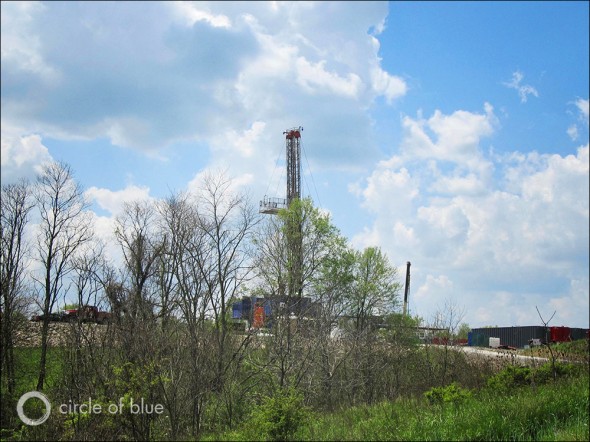

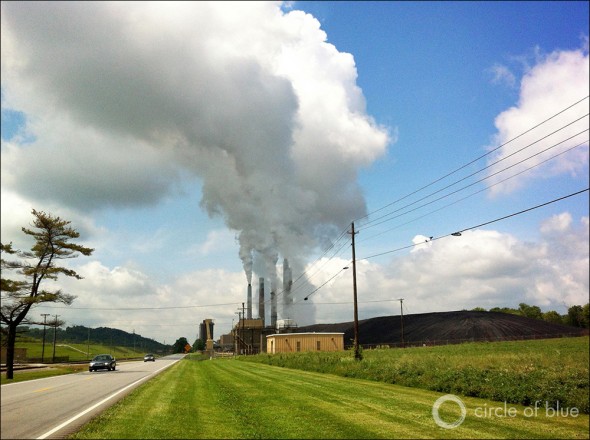
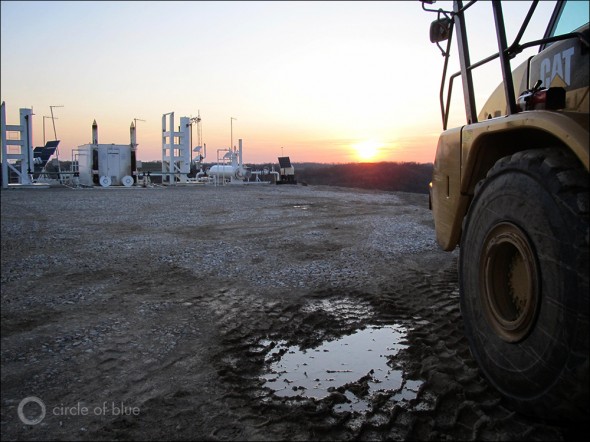
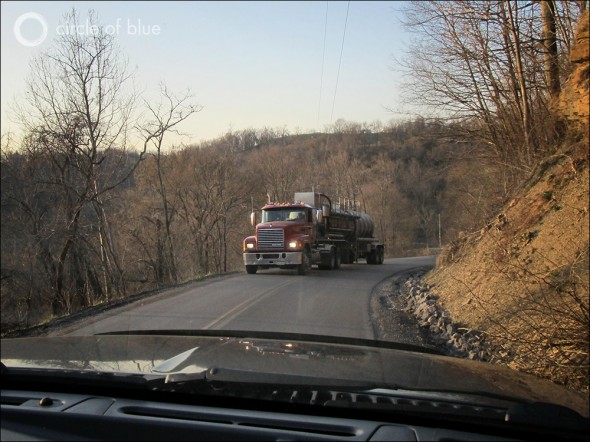




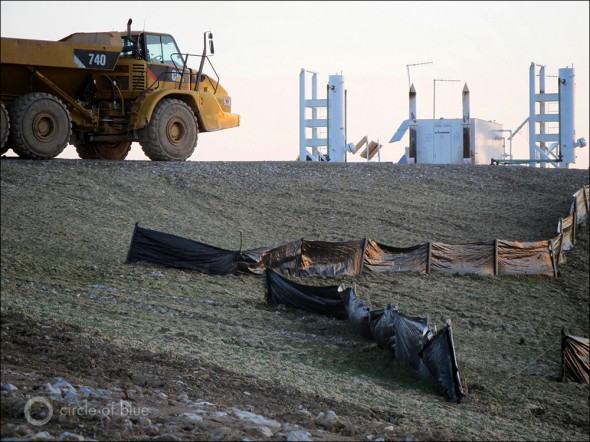











Tuesday, August 27, 2013
Department of Justice
Office of Public Affairs
FOR IMMEDIATE RELEASE
Tuesday, August 27, 2013
Laboratory Operator Sentenced to 40 Months for Fabricating Industrial Wastewater Results
Tennie White, the owner and operator of an environmental laboratory located in Jackson, Miss., was sentenced in federal court late yesterday to 40 months in prison in connection with her conviction for faking laboratory testing results and lying to federal investigators, announced Gregory K. Davis, U.S. Attorney for the Southern District of Mississippi, and Robert G. Dreher, Acting Assistant Attorney General for the Justice Department’s Environment and Natural Resources Division.
White also was sentenced to three years of supervised release to follow her prison sentence and was ordered to pay a $1,000 fine and a $100 special assessment. White was sentenced by U.S. District Judge Henry T. Wingate at the federal courthouse in Jackson, where he also presided over the May 2013 trial of the case.
“Independent laboratories play a critical role in assisting businesses to accurately monitor and report discharges of industrial pollutants that may adversely affect the environment,” said Acting Assistant Attorney General Dreher. “Businesses cannot fulfill this important responsibility if these laboratories are not honest brokers and falsify test results and monitoring reports. This prosecution shows that fraudulent testing and reporting by laboratories will not be tolerated.”